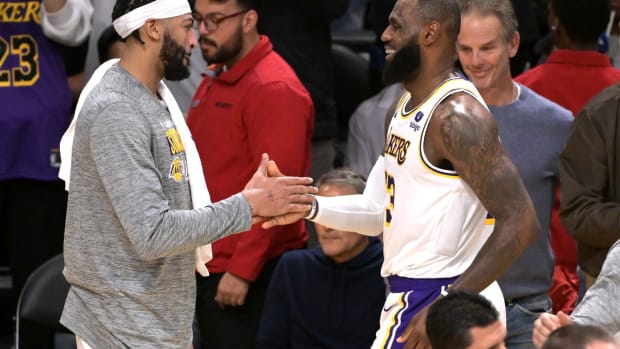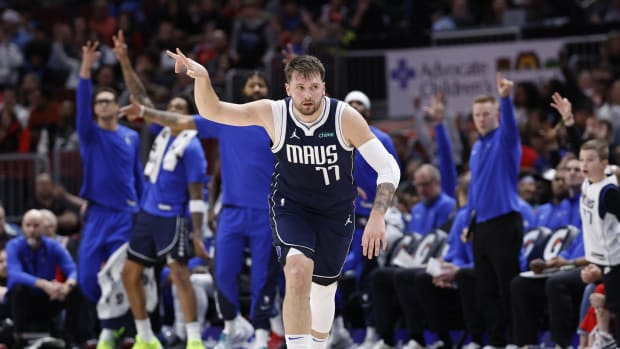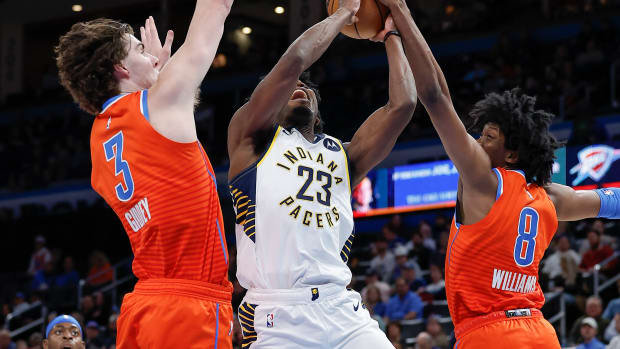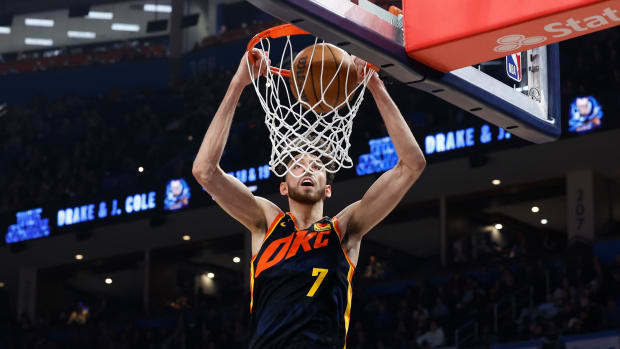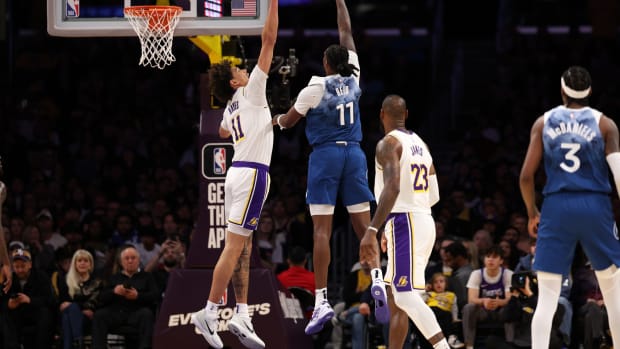The Process Lives On With Jimmy Butler
I didn’t want the Sixers to sign LeBron James. I know that sounds irrational to many people now, and I knew it sounded irrational to many people at the time. But as a lifelong Sixers fan and Day 1 Process devotee, I didn’t want the team to sign him.
There were many reasons, and I don’t have to run through them all now, but I think one of the best-articulated explanations came from Andrew Unterberger in a piece for The 700 Level with a title “Is it cool if I'd rather LeBron didn't sign with the Sixers?”, he wrote that whether or not you wanted LeBron boiled down to one key question for Sixers fans: Which team are you really rooting for, The Sixers or These Sixers?
And while no other player in this generation has been able to singlehandedly alter the basketball universe quite like LeBron’s quadrennial dalliances with free agency, Saturday’s trade for Jimmy Butler represented an even further departure from “these” Sixers—the Process Sixers—than signing LeBron would have. In shipping Robert Covington and Dario Saric to Minnesota [along with Jerryd Bayless and a second-round pick] the Sixers’ timeline-altering move features not just a massive addition, but two notable subtractions.
My initial reaction—like many Process-trusting Sixers fans, I would think—was mixed. There was excitement, of course. But I admit I was also a little sad.
Few fan bases have a relationship with their team quite like the Sixers. I know that’s probably something that every fan base says, but the Sixers fans who stuck with the team through every step of the Process have been through a lot. Many people—often those who weren’t actually all that close to the situation—didn’t believe this at the time, but for many diehard Sixers followers it was actually a pretty fun ride. I’m frequently reminded of the night in December 2013 when the Sixers finally snapped their 17-game losing streak to win their first game of the season. Philly Twitter went wild on a random Wednesday. There was genuine joy, a foreshadowing of what it would be like once the team started to win games that matter.
MAHONEY: Breaking Down Jimmy Butler's Fit With 76ers
Of course things got better from there, and more frequently the losses turned into wins. Through good times and bad, turning on the Sixers meant tuning in to see Dario and Cov, key cogs in a fun, young core that seemed, as a bonus, to love playing with one another and being teammates. Sometimes it meant highlight plays and game-winners, or a collection of goofycelebrations. Or even group viewings of the Croatian Olympic team. We basically watched them grow up:
And on Saturday it was over. Two cornerstones of the Peak Process Era Sixers, two of the four remaining players who overlapped with Sam Hinkie’s tenure in Philadelphia, were flipped like so, so, so many names who had shuttled in and out of town before them.
On one hand the news carried with it the sudden shock of any major NBA deal. On the other hand we had seen this coming for months, as both players were listed every single time the NBA rumor mill linked the Sixers to another big name.
So… I mentioned excitement too, right? The Sixers do have Jimmy Butler now, after all.
In May 2017, I wrote [smugly, I’ll admit] that the Sixers initiated the Process because they weren’t content having the ceiling of the 2013-17 Raptors. I say smugly because the Sixers hadn’t yet come close to the same level of success Toronto had seen. While it may have sounded harsh, though, it was also a fairly realistic conclusion after yet another Raptors playoff exit. Those Raptors teams were good and fun and successful, and the fan base had a right to be proud of them, but they were never going to win the title. They have since acknowledged this and brought in a new coach and a new superstar in an effort to climb the mountaintop.
Truthfully the Sixers as constructed for the 2017-18 season likely had the same ceiling, not just in their first trip to the playoffs but in the next few years to follow. The loss to Boston in five games in the Eastern Conference semifinals magnified all of their flaws. Afterward, the Sixers’ options were to run it back and hope everyone got better, or make a drastic change. When LeBron chose L.A. and Paul George chose Oklahoma City, free agency became a much less viable option and swinging a major trade became the logical move.
After years of mocking perennial eight seeds and criticizing teams for choosing to remain comfortably good instead of chasing the chance to be great, my brain tells me to approve of this trade. This was the plan all along, of course. The acquisition of elite talent, as Hinkie might say. Star hunting, as Brett Brown already has.
MANNIX: Jimmy Butler Brings New Label to 76ers: The Gamble
Many are now saying that the Processis over, never mind that very smart people have been saying that for a while now. But this trade was textbook Process. Turning assets into superstars was Hinkie’s central thesis. He wrote the following in his resignation manifesto about acquiring superstars:
“Ask who wants to trade for an in-his-prime Kevin Garnett and 30 hands will go up. Ask who planned for it three or four years in advance and Danny Ainge is nearly alone. Same for Daryl Morey in Houston trading for James Harden.”
I suspect that somewhere Hinkie smiles at the chain of events that led to this moment. That when Jimmy Butler became available, the Sixers were in position to pounce. They spent years hoarding assets in preparation to secure a superstar talent, and then in the middle of the season they were able to acquire a two-way force with four All-Star appearances without giving up either of their two best players or a single first-round draft pick.
The Sixers now have three stars in Butler, Joel Embiid and Ben Simmons, which seems to be the present-day baseline requirement for a championship. That continues to matter more than anything else.
There will be some adjustment time for the players to get to know each other. There will also be some tinkering with both rotations and the remaining roster spots. The team filled in the edges around the 2018-19 roster based on the important building blocks they already had under contract. Now they’re down two starters and working in another ball-dominant player.
But, sad as it is for many people to see Saric and Covington go, the Sixers are now closer to title contention than they were a week ago.
I wrote last year that I feel more invested in the Sixers than any team I have ever followed and rooted for. The Sixers or these Sixers I’m not quite sure. They are hard to separate, and remain so even after this particular deal. Ben Simmons was the first draft pick of the Bryan Colangelo era, even if Hinkie had put them in position to collect those ping-pong balls and use the No. 1 overall pick on the consensus top choice. The Markelle Fultz trade is Colangelo’s most obvious stamp on the Sixers’ roster—positive or negative still yet to be seen, though most people seem to have made up their mind. The Jimmy Butler trade becomes the first real move of the Elton Brand era, but the transaction tree still dovetails directly from two of Hinkies’ signature acquisitions. Hinkie’s undrafted free agent and two-year Euro stash turned into an All-Star in his prime. Never mind that the chain of events took three general managers' tenures to complete.
NADKARNI: Grading 76ers Deal for Jimmy Butler
Trading for a disgruntled player in a contract year carries some risk. Butler’s words and mood will be reported on daily. His impending free agency will hang over both the player and the team until the moment the ink is dry on his next deal. It will also likely color the opinion many people have of the trade when all is said and done.
But taking a risk on a player in Butler’s situation is also, potentially, an opportunity to buy low and extract value. Not too dissimilar from drafting an injured center. Or drafting a guy who says he’s playing in Turkey for two years. Or signing the D-League Rookie of the Year to a four-year NBA contract.
Jimmy Butler’s presence on the Sixers’ roster is a product of the many moves that made the trade possible in the first place. And if you follow the narrative arc of his new team, it sure looks like this trade is the continuation of an existing storyline and not the beginning of a whole new book.
A few things are clear after yet another momentous week for a franchise that’s had plenty of them:
These Sixers are different. The Sixers are better. The Process rages on.































